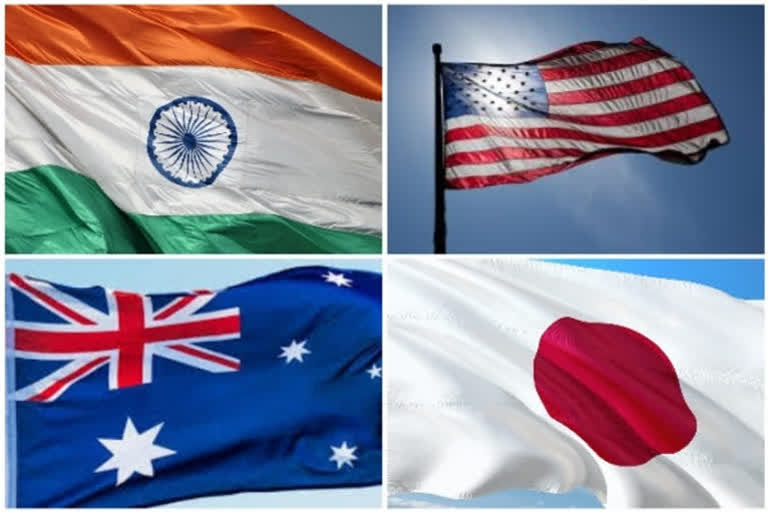New York:Nearly 17 years after the deadly 2004 tsunami, when outgoing Japanese Prime Minister Yoshihide Suga, Indian Prime Minister Narendra Modi, Australian Prime Minister Scott Morrison and US President Joe Biden meet September 24 for the first ever in-person leader level summit of the Quadrilateral Security Dialogue, it will mark a high point in a steady year-long elevation against the backdrop of China's growing economic and military strength and Covid-19.
Covid-19 vaccine production and distribution, supply chain resilience in critical and emerging technologies like semiconductors and 5G telecom networks are tipped to be top of the agenda.
For India's Prime Minister Narendra Modi, the Quad meeting will be bookended by a Covid-19 summit convened by Biden and Modi's own speech at the UN General Assembly, on Saturday.
The Covid-19 summit taps into the heart of Quad's most urgent priorities - and India's strengths in vaccine production. In the last 17 years, the Quad has taken a meandering path to its current prominence, with China's shadow being a central theme. In early 2021, Quad returned to the big stage after a nearly 10 year lull.
Also read:Australia-UK-US pact signals Asia-Pacific power shift
Beginning from its roots in crisis, here is a timeline that captures some of the key moments that have nudged the Quad into a closer embrace:
2004: The earliest framework for the Quad surfaced when the US, Japan, India and Australia formed a "core group" during their joint response to the 2004 tsunami.
2006: While in Tokyo, Indian Prime Minister Manmohan Singh announced that Japan and India wanted to begin a dialogue with other "like-minded countries in the Asia-Pacific region". In the same year, Japanese Prime Minister Shinzo Abe proposed an "Arc of Freedom and Prosperity".
2007: In August, Japanese Prime Minister Shinzo Abe's "Confluence of the Two Seas" speech sparked the ideological foundations for the Quad. Speaking in the Indian Parliament, he said, "The Pacific and the Indian Oceans are now bringing about a dynamic coupling as seas of freedom and of prosperity. A 'broader Asia' that broke away geographical boundaries is now beginning to take on a distinct form. Our two countries have the ability -- and the responsibility -- to ensure that it broadens yet further and to nurture and enrich these seas to become seas of clearest transparence."
2007: Quad countries held their first official meeting, in Manila. The Prime Ministers of India, Japan, and Australia met with then US Vice President Dick Cheney on the sidelines of the ASEAN Regional Forum (ARF). In the same year, within four months of the first meeting, Quad countries, alongwith Singapore, held an ambitious naval exercise in the Indian Ocean. But the downplaying went in parallel. Australia framed the Quad as a construct limited to trade and culture, India said the Quad had "no security implication."
2007: Prime Minister Shinzo Abe, a champion of the Quad grouping, resigned in September 2007. The Quad lost its most vocal champion.
